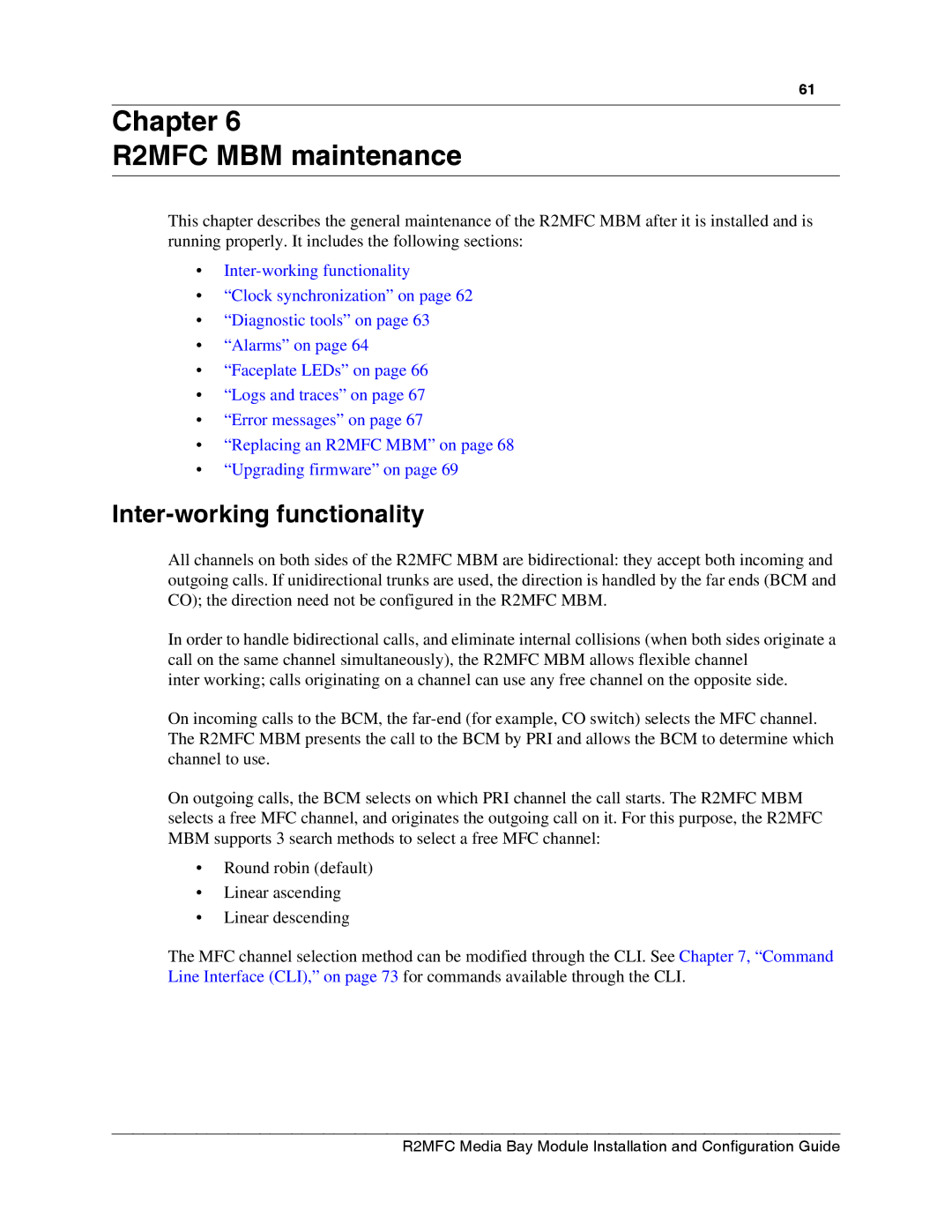
61
Chapter 6
R2MFC MBM maintenance
This chapter describes the general maintenance of the R2MFC MBM after it is installed and is running properly. It includes the following sections:
•
•“Clock synchronization” on page 62
•“Diagnostic tools” on page 63
•“Alarms” on page 64
•“Faceplate LEDs” on page 66
•“Logs and traces” on page 67
•“Error messages” on page 67
•“Replacing an R2MFC MBM” on page 68
•“Upgrading firmware” on page 69
Inter-working functionality
All channels on both sides of the R2MFC MBM are bidirectional: they accept both incoming and outgoing calls. If unidirectional trunks are used, the direction is handled by the far ends (BCM and CO); the direction need not be configured in the R2MFC MBM.
In order to handle bidirectional calls, and eliminate internal collisions (when both sides originate a call on the same channel simultaneously), the R2MFC MBM allows flexible channel
inter working; calls originating on a channel can use any free channel on the opposite side.
On incoming calls to the BCM, the
On outgoing calls, the BCM selects on which PRI channel the call starts. The R2MFC MBM selects a free MFC channel, and originates the outgoing call on it. For this purpose, the R2MFC MBM supports 3 search methods to select a free MFC channel:
•Round robin (default)
•Linear ascending
•Linear descending
The MFC channel selection method can be modified through the CLI. See Chapter 7, “Command Line Interface (CLI),” on page 73 for commands available through the CLI.
